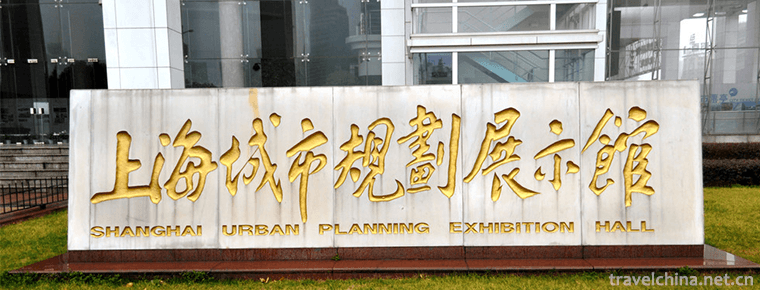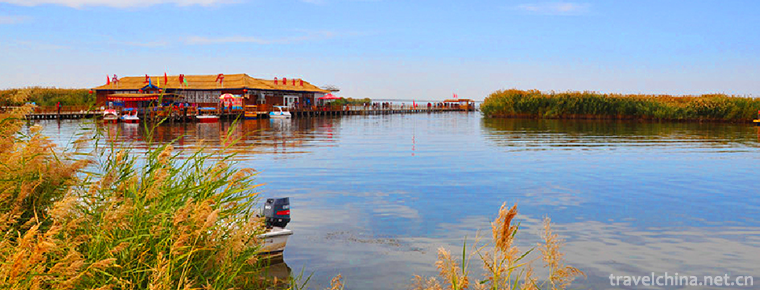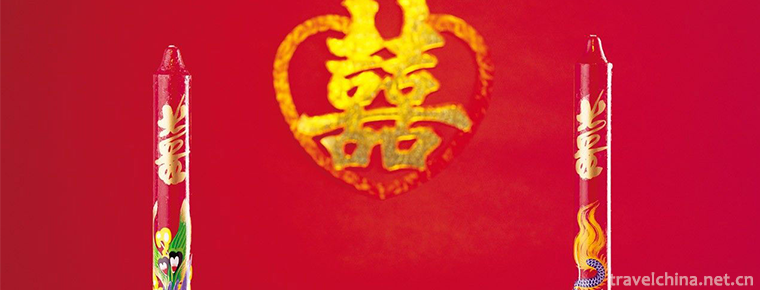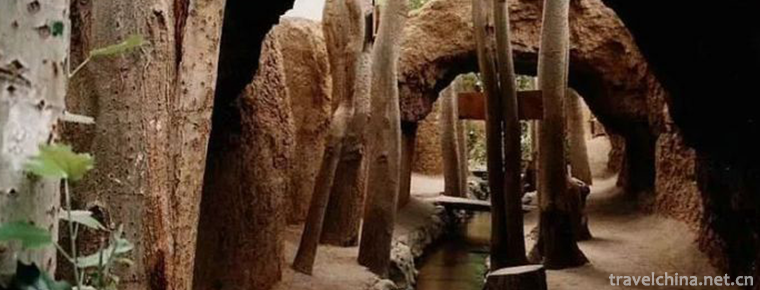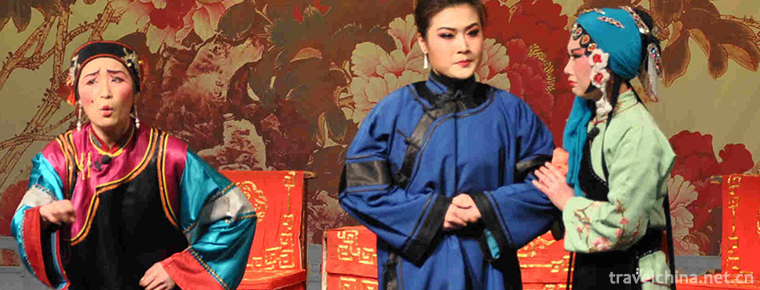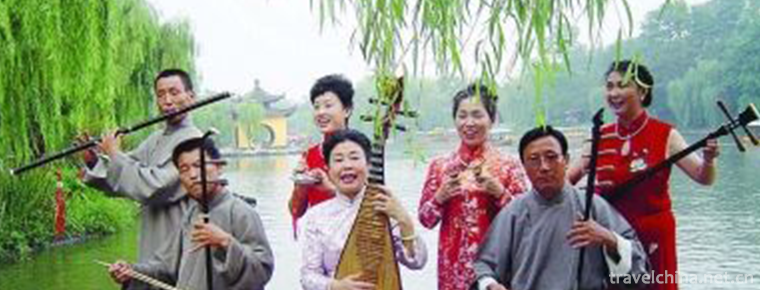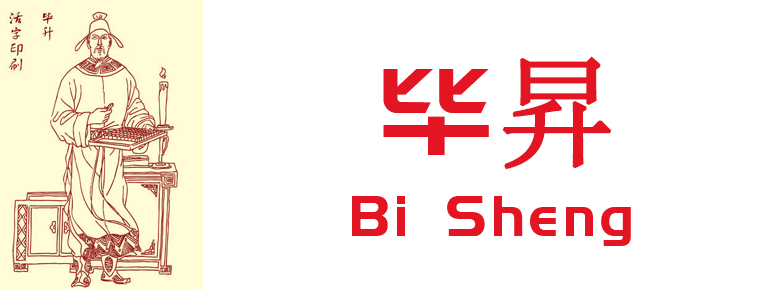Mutual Aid Tu Nationality Hometown
Huzhu Tujia Hometown Scenic Area is located in Weiyuan Town, Huzhu Tujia Autonomous County, Haidong City, Qinghai Province. It is 31 kilometers away from Xining City, the capital of Qinghai Province. The total planned area is 6.81 square kilometers, of which the core tourist area is 3.25 square kilometers. The scenic spots include the source of highland barley wine in Tianyoude, the Tujia Garden of Rainbow Tribe, Naton Manor, the Western Tujia Folk Culture Village and Xiaozhuang Tujia Folk Culture Village. They show the colorful folk culture of Tu nationality, the long-standing highland barley wine culture, the long-lasting distillation wine culture, the ancient and pure architectural culture, the unique folk residence culture and the ancient and mysterious culture. Religious culture is the most comprehensive, pure and authentic tourist attraction in the world with the theme of "Tu culture", which integrates sightseeing, leisure and vacation, folk experience and religious pilgrimage. It has become the preferred place for tourists at home and abroad to focus on understanding Tu folk culture.
In 2001, it was appraised as a national AAAA-level tourist attraction by the National Tourism Administration. In 2013, the Mutual Aid Tu Nationality Hometown officially launched the creation of national AAAAA-level tourist attractions. In 2014, the Mutual Aid Tu Nationality Hometown passed the evaluation of the landscape value of the National Tourism Administration and was listed as the national AAAAA-level tourist attraction creation list.
Brief Introduction of Tourist Areas
The National 5A Scenic Spot is located in the northeast of Qinghai Province. It has convenient transportation. It is 50 kilometers from Xining Airport. The Qinghai-Tibet Railway and Lanxi Expressway pass through Gaozhai Town. Pingdao Highway, Weibei Highway and Ningbo Highway connect the main scenic spots in the territory. It is 31 kilometers away from Xining, the capital of Qinghai Province. It is a comprehensive tourist attraction integrating sightseeing, leisure and vacation, experiencing folk customs and religious pilgrimages. Since the 1990s, Huzhu County has gradually developed into the only Autonomous County in China with the Tu nationality as the main ethnic group. It is called "Tu nationality's homeland". In the common people's view, "Tu nationality's homeland" is "Huzhu county", and the Tu nationality's national customs are the most attractive ethnic cultural tourism resources in Qinghai Province. Therefore, the whole tourist attraction of Muzhu is collectively called "Muzhu Tu Nationality's homeland". 。
The primitive and simple natural environment, the magnificent and unique ecological environment and the ancient and mysterious cultural relics in the scenic area have strong attraction and competitiveness. The four major brands of mutually-aid tourism are the Tu ethnic culture, the well-developed plateau ecosystem, the long-standing religious culture and highland barley wine culture. The Tu nationality is one of the ancient nationalities living in Qinghai. Because of its unique human and natural conditions, the formation of the culture and art of the Tu nationality in Qinghai adds some mystery to its unique culture, history, language, folklore, art, religious beliefs and other factors. At the same time, a large number of tourists are attracted by folk traditional festivals, such as "Rotary Festival on February 2", "Flower Fair on June 6", "Danma Fair" and so on.
Tourism Resources Plate
Huzhu County is a large tourism resource county in Qinghai Province and one of the key counties in developing tourism in Qinghai Province. Its ecological environment is primitive and plain, its cultural relics are ancient and mysterious, and its folk customs and customs are quite different. It has formed five unique tourism resources plates, namely, the Tu folk culture tourism resources represented by Rainbow Tribe Tu Garden, Naton Manor and Xiaozhuang Tu folk culture village. Tianyoude is the source of highland barley wine in China, the highland barley wine cultural tourism resources represented by Shiyide Winery and Weiyuan Burning House; the natural ecological tourism resources represented by Beishan National Forest Geopark; the religious and cultural tourism resources represented by Youning Temple, the mother of Huangbei temples; and the plateau health and fitness tourism resources represented by golf course and NetBadminton Center. Step into the rainbow's homeland - mutual aid, each scenic spot will leave you the most unforgettable memory, each scenic spot is like a plateau landscape poem, let you wander in it, linger and forget to return.
Tourist Center of Scenic Spot
The Tourist Center of Huzhu Tu Nationality Hometown Scenic Area is located at the intersection of Tianyoude Avenue and Nanjie Street in Weiyuan Town, County Town, adjacent to Qinghai Huzhu Highland Barley Liquor Co., Ltd., the largest barley wine production base in China. The centre covers an area of 3000 square meters, with a construction area of 1000 square meters and a parking area of 800 square meters. It is a comprehensive service organization integrating ticket selling, promotion, tour guide service, transfer, consultation and complaint, medical assistance, special shopping, monitoring and supervision. It also has full-time Chinese, English and Japanese language tour guides, consultation and other service personnel. It also provides tourists with " Eat, live, travel, travel, purchase, entertainment "all-round service of visitor's home. The center has eight functions, namely, ticket selling function of scenic spots, selling tickets and tickets of mutual aid Tu Nationality Hometown scenic spots by group buying, online shopping and other different ways. The function of consultation and complaint provides tourists with tourism consultation and dismantling services to help them solve the difficulties and problems in the process of tourism. Tour guide service function, for the team and individual visitors to select excellent tour guides on duty service, and according to different language types and titles of the level of self-selection of tour guides and interpreters. Film and television service functions, through large-scale LED electronic display screen, touch screen and other technical means, display and promote Mutual Aid Tu Nationality Hometown and surrounding scenic spots, hotels, leisure and entertainment, information and information. Shopping and leisure functions, in order to facilitate the leisure and shopping of tourists, there are special tourist shopping areas and tourist rest areas in Qinghai. Tourist distribution function, tourists can transfer to the tourist battery car directly to the local garden scenic spots, but also can transfer to the tourist special line bus directly to help other scenic spots to visit. Integrated service function, the center has a large parking lot and two temporary parking points, which can park more than 500 vehicles of various types. In addition, it also provides parcels storage, medical assistance, special population, free WIFI and other services. Monitoring and supervision function, the center is equipped with advanced monitoring equipment to monitor and supervise the tourist order, tourist flow, tourist safety and vehicle management of scenic spots 24 hours a day and seamlessly.
Rainbow Tribe-Tu Garden
Rainbow Tribe-Tu Nationality Garden is a large-scale theme park of Tu Nationality folklore culture, covering an area of 130,000 square meters, with a building area of 13,000 square meters. It has 18 Donggou Old Oil Workshop, Shiyide Wine Workshop, Living Buddhist Court, Anzhao Square, Tusi Mansion, Zhuangkuo Court and intangible cultural heritage heritage heritage heritage heritage protection center built in the form of green bricks and green tiles, raw adobe, brick carving and wood. The ancient architectural complex of folk culture, which shows the Tu people's long history, folk culture, production and living customs and intangible cultural heritage, has a high ornamental, entertaining and participatory nature, and has become the largest concentrated expression of folk entertainment in Qinghai Province.
Norton estate
Known as "barley distillation wine", Naton Manor is one of the most charming folk tourist attractions in Qinghai Province. The manor covers an area of 30,000 square meters, with a total investment of 70 million yuan. It has built the most primitive and oldest manual brewing workshop of the Turkish people, the largest underground wine cellar in Qinghai and even northwest China. It resembles the Golden Flower performing center of the Turkish men's felt cap, the Turkish people, the Tujia people, the Guotou Lianhuan, the Buddhist hall mulberry, and the multi-cultures of nomadic and farming are all within the boundaries of the adobe village inn. The most representative style of residential architecture is built, which is the ideal place for you to live and play.
Tu Folk Culture Village in Western China
The Tu folk culture village in Western China is one of the earliest scenic spots in Huzhu County which engaged in folk tourism reception. The scenic spot covers an area of 20,000 square meters. It contains "the world's first mannequin stone". Once it enters the three courtyards, it imitates the Ming Dynasty Tusi mansion, the primitive ancient water mill and the century-old oil mill, the well-known Weiyuan burner in Hehuang and the "circle banquet" reflecting the most ancient traditional Tu banquet culture. It can be said that you can personally experience the original local customs and customs of the Tu people in the western Tu folk culture village, as if the time went backwards and the history reappeared.
Xiaozhuang Tu Folk Culture Village
Weiyuan Town Xiaozhuang Tu Folk Culture Village is one of the "ten traditional villages" in Huzhu County. The Tu population accounts for 98.3% of the total population. It has 90 rural tourism receivers. It has been appraised as the national rural tourism demonstration site, the most beautiful village in Qinghai Province and the first batch of demonstration bases for Chinese rural tourism entrepreneurs by the relevant departments of the state, provinces and municipalities. Li "Aunt" slim hand flying needle, affectionate "Awu" wheel flying around, "seven-color sleeve" tells the ancient spread of love. Here, when you enter any farm yard, you can truly experience the original local customs and traditional customs of the Tu people, such as family visits, folk catering, marriage customs, clothing and handicraft exhibitions of the Tu people.
The Source of Chinese Highland Barley Wine in Tianyoude
Tianyoude, the source of highland barley wine in China, is the largest production base of highland barley wine and the protection base of origin of highland barley wine in China. Barley wine brewing originated in Yuan Dynasty, flourished in Ming and Qing Dynasties, developed in modern times, and is now brilliant. In 1952, Huzhu County established a state-owned Huzhu County winery on the basis of eight workshops, namely Tianyou De, Yongqing He and Shiyide. In January 2011, Qinghai Muzhu Highland Barley Liquor Co., Ltd. was officially renamed as Qinghai Muzhu Highland Barley Liquor Co., Ltd. It was listed on the Shenzhen Stock Exchange in December of the same year with registered capital of 450 million yuan, total assets of 1.8 billion yuan, covering an area of 300,000 square meters, annual production of 15,000 tons of highland barley original liquor, production of Tianyou de, eight workshops, Yongqing He, Mutual Aid four series of highland barley liquor products, a total of more than 100 varieties, with "Mutual Ai "Tianyoude" two well-known Chinese trademarks and "Mutual Aid" Chinese old brand. Besides firmly occupying the Qinghai market, the products are also sold to 32 provinces, cities, autonomous regions, the United States, Russia and other European and American countries.
In 2013, Qinghai Muzhu Highland Barley Wine Co., Ltd. successfully acquired Maxwell Winery, a famous winery in the United States, which extended the company's products from a single liquor to the wine field, enhanced the differentiated advantages of Highland Barley Wine, and opened a new era of wine production.
Taboo of Tu Nationality
There are many taboos in Tu people, such as avoiding eating round-hoofed livestock (horses, mules, donkeys); avoiding urinating and defecating in animal pens, which would affect the growth of livestock; avoiding pouring tea to guests in a cracked bowl; not asking guests if they have eaten or not to eat; quarrelling and beating children in front of guests are considered the most impolite and will be regarded as an eviction order; entering Tu people, they must. First, greet outside the courtyard and wait for someone to respond before entering the hospital; young women's bedrooms are not allowed to enter freely and play jokes with unmarried girls; avoid guests counting their sheep; avoid smoking, spitting, tumbling and loud noise in Buddhist halls and halls; avoid crossing over monks'kneeling mats and other items; avoid sneezing and coughing on butter lamps; and when turning Sutras in Buddhist halls, It must be irreversible from left to right; hunting and urination are prohibited near monasteries.
Matters needing attention
1. Qinghai love song "Huaer" can not be sung at home, mostly in the field, such as sleeping in the Tu family at night, do not invite the Tu people to sing Huaer, or listen to Huaer tapes and other audio-visual products.
2. The Turks taboo eating the meat of mules, horses, donkeys and other round-hoofed livestock. Therefore, it is better not to mention horse meat, donkey meat, dog meat, etc. in front of the Turks, but also to avoid bringing it into the Turkish family.
3. The Turkish people mostly believe in Lamaism. Tourists should respect the religious beliefs and customs of the Turkish people.
Qinghai tourist attractions
Qinghai Province is one of the important provinces on the Qinghai-Tibet Plateau in China. It has the name of Qinghai Lake, the largest inland saltwater lake in China. Being known as the "source of rivers" and "China Water Tower", Qinghai has hundreds of tourist attractions besides the famous Qinghai Lake, such as the Three Rivers Source and the Bird Island of Qinghai Lake.
Tar Temple, Bird Island, Riyue Mountain, Huangnan Cambra, Sanjiangyuan, Mutual Aid Tu Hometown Tourist Area, Haidong Xunhua Tourist Area, North Chan Temple, Jinyintan Grassland, Huangyuan Gorge, Goloanimaqing Snow Mountain, Wanzhang Salt Bridge, Balong International Hunting Ground, Nanshan Park, Guide Hot Spring, Backflow River, Lebagou Rock Painting, Huangnan Regong Art Township, Xingsuhai, Niangniang Mountain, Yaoshui Beach Temperature Spring, Huangnan Longwu Temple, Nanmaixiu Primitive Forest, Guoluo Nianbaoyuze, Lushan Rock Painting, Chuangxin Temple, Huangzhong County Museum, King Gesar Shilong Palace, Qianzihu, Yellow River Source, Xilai Temple, Qinghai Lake Sand Island, Xining People's Park, Haixi Baishu Mountain, Guoluo Baiyu Temple, Tangbo Ancient Road, Goluo Goddess Peak, Haidong Jishishan, Talai Lake, Jiegu Temple, Xianmi Linchang, Haihai West Shell Mountain, Dulan International Gaming Ground, Xining Children's Park, Golodoca Temple, Haixi Hanhai Berlin, Liuwan Cemetery, Xining Kayo Cultural Site, Huangnan Deqin Temple, Saizhong Temple, Yanhai Yubo, Nomuhong Site, Tongtianhe Sunshine Jingtai, Longbaotan Nature Reserve, Tianjun Mountain, Koluk Lake, Dongguan Mosque, Youning Temple, Sancha River Bridge, General Building, Da Nasi, Tibetan Niang Ancient Pagoda, Gaer Temple, Gazang Temple, Gesar Relics, Tang Monk Sunshine Sutra, Kruk Lake, Baigong Mountain, Tianjun Stone Forest, Heishishan Reservoir, Coco Salt Lake, Batang Hot Water Valley, Erlang Cave, Qinghai Museum, Qunza West Beach, Gado Awakening Snow Mountain, Wangjiazhuang Han Tomb, Yadanlin, Hongjungou, Tawen Tarima Site.
Famous scenic spot



-
Shanghai Urban Planning Exhibition Hall
The Shanghai Urban Planning Exhibition Hall was completed in early 2000 and opened to the public on February 25, 2000. As an important window for Shanghai's external publicity, Shanghai .
Views: 129 Time 2018-12-19 -
Linhe Yellow River National Wetland Park Inner Mongolia
Inner Mongolia Linhe Yellow River National Wetland Park is located in Linhe District, Bayannaoer City, Inner Mongolia Autonomous Region, with a total area of 4637.6 hectares. The functional zoning map.
Views: 164 Time 2018-12-26 -
Mudan River Side Wall
The Mudanjiang Side Wall was built in the Tang Dynasty, presumably at the junction of Mudanjiang City in Heilongjiang Province and the northeast of Hailin County. .
Views: 286 Time 2019-02-07 -
Traditional Marriage Customs of the Han Nationality
The ancestors of the Han nationality believed that dusk was auspicious, so they would marry at dusk. Therefore, the etiquette of marriage was called "dusk rite", which later evolved.
Views: 196 Time 2019-05-02 -
Cutting Skill of Kaner Well
Kanerjing is the meaning of "well hole". It has been recorded as early as in Historical Records. It is called "well canal", while Xinjiang Uygur language is called "Kanerzi&qu.
Views: 110 Time 2019-05-08 -
Wuyin Opera
Wuyin opera has a history of nearly 300 years. Its singing style is graceful and charming. It is known as "Northern Yue Opera". Its occurrence, development and finalization have gone through.
Views: 133 Time 2019-06-29 -
Yangzhou Qingqu
Yangzhou Qingqu, also known as "Guangling Qingqu" and "Weiyang Qingqu", is a form of Musical Singing developed on the basis of popular songs and minors popular in Yangzhou during t.
Views: 126 Time 2019-07-10 -
The Story of the Hundred Birds Clothes of the Zhuang Nationality
At the beginning of liberation, Guangxi was a remote part of China at that time, but the appearance of Hundred Birds'Clothes showed that Guangxi was not a barren place for literature, and the minority.
Views: 202 Time 2019-08-16 -
Bi Sheng
Bi Sheng (about 971 years to 1051) was promoted to Hubei, Huanggang, Hubei. Yingshan County One of the great inventors of ancient China, the inventor of the five great ancient inventions of ancient Ch.
Views: 216 Time 2019-09-06 -
Furong mountain
Furong mountain in Sichuan Province is a snow mountain, stretching for hundreds of miles. Furong mountain scenic area is composed of Furong mountain, Shunan hot spring, hanging coffin.
Views: 132 Time 2020-10-16 -
Cheongsam production technology
Most of the classical flag dresses have straight lines. The body is loose and the two sides are split. The bust and waist circumference are close to the size of the dress. The appearance of cheongsam is generally required to have all or part of the following characteristics:.
Views: 144 Time 2020-12-11 -
Climate in Guangan
Guang'an City belongs to the humid monsoon climate zone of middle subtropical zone, with mild climate and suitable for agriculture in four seasons. In summer, it is affected by the Pacific subtropical high, the Qinghai Tibet high, the plateau fluctuation, and the southwest w.
Views: 181 Time 2020-12-19
